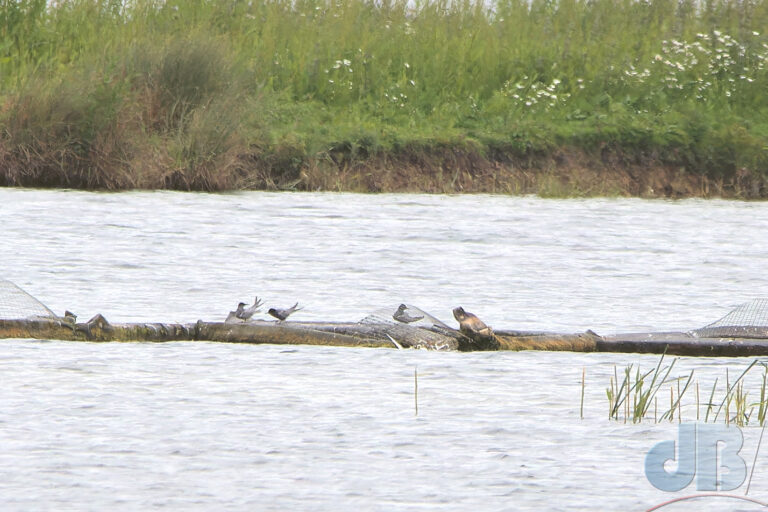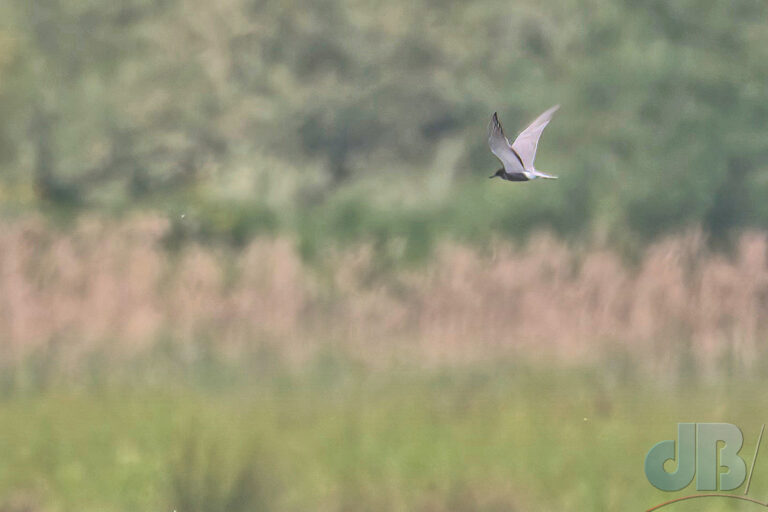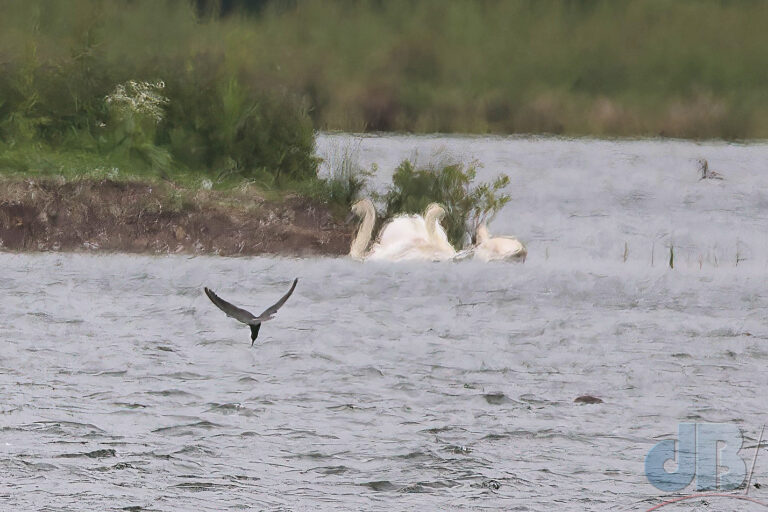TL:DR – Record shots of the three Black Terns at a local RSPB reserve.
They say that one good tern deserves another, if you’re talking comic terns. So, when you go looking for one and three come along all at once it’s quite amusing.
As I mentioned in a previous post about processing low-light photos, we were camping, locally…so local in fact that when three Black Terns were mentioned as being present on Ferry Lagoon at RSPB Fen Drayton it was only a short hop from RSPB Ouse Fen where we were camping to get a view of them.

Of course the birds were fishing in the waters there at a distance from the closest viewpoint of between 250 and 300 metres. Quite a distance to look through even a 600mm zoom lens or binoculars, especially on a dull grey day. But, we saw them. regular readers might recall the American Black Tern we chased around Northumberland to see in 2022. The American is Chlidonias niger surinamensis and as far as I know there have not been any sightings of the sub-species in the UK this year. The Black Terns we were watching on Ferry Lagoon are the parent species Chlidonias niger.

As is the wont of vernacular names, there is often only an element of truth in them. Indeed, the Black Tern has a grey, if not blue appearance about its wings, a white rump and a sooty head and almost black bill, at least in its breeding plumage, it is perhaps blacker out of season.

The bird generally fishes on inland water in Europe, Western Asia, and North America. It has a couple of old names, “Blue Darr” (Blue Tern) and “Carr Swallow” (Lake Swallow). The genus name comes from the Ancient Greek, khelidonios, for swallow-like, while the species name, niger means shining black.
I had seen one once before, but briefly, perhaps summer of 2018, flying over the Reedbed Trail area of RSPB Ouse Fen. As I check Birdguides for sightings there are others present in ones twos, and threes all over England. The bird was once common in the Fens, but drainage led to its local extinction by about 1840. It’s wonderful to see it flying here where gravel pits have been morphed into nature reserves as with Ouse Fen and Fen Drayton.